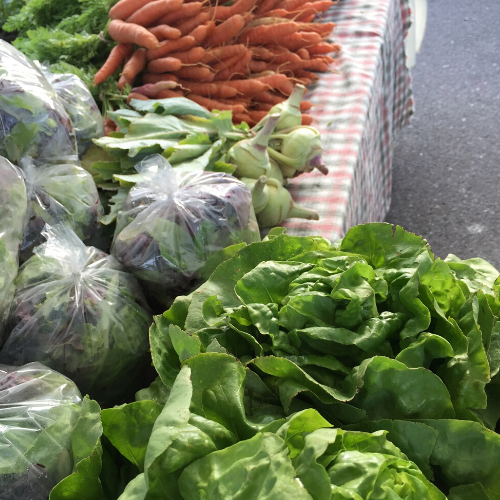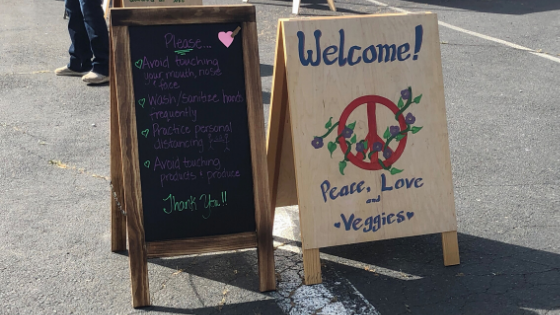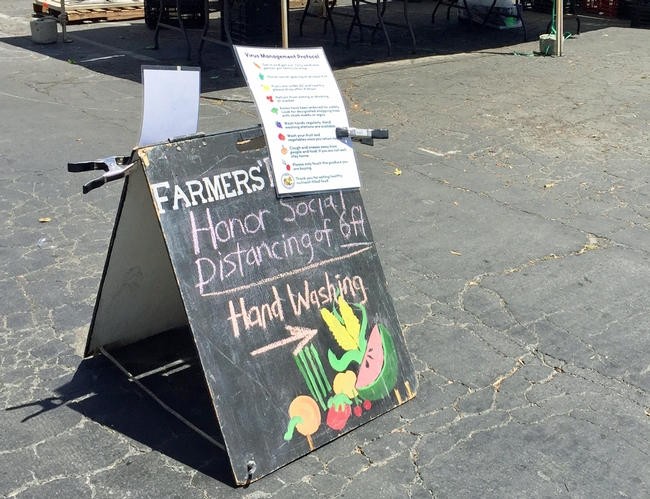When California issued a statewide stay-at-home order to slow the spread of COVID-19 earlier this spring, a handful of essential services were exempted from the order. Along with grocery stores and agricultural operations, farmers markets were included as essential sources of food. For the farmers and other vendors who sell at farmers markets, their businesses and sometimes their livelihoods depend on the markets. For many people, farmers markets are important social occasions, as we all like to gather around good food to talk, share, and eat together. But the primary role farmers markets fill as sources of nutrient-dense, high-quality, fresh fruits and vegetables has become increasingly clear as bare produce shelves in stores have become an unfortunately common sight.

Farmers markets are essential community food sources and important for promoting social connection, which are especially needed now in small towns and counties.
In addition to being essential community food sources, farmers markets are important for promoting social connection, which is especially needed now in our small towns and counties. The risk of social isolation and disconnection is always present in rural areas, but it is especially pronounced in this time of social distancing. While it's essential to maintain physical distance to slow the spread of COVID-19, it is also critically important to maintain our relationships and sense of belonging in our communities. Purchasing locally grown food from a familiar producer, having the opportunity to ask questions and discuss the food in a physically distanced way, and knowing that each purchase supports the livelihood of people in our community are all important benefits of farmers markets in the time of COVID-19.
However, to some of us sheltering in place the thought of attending a typical farmers market right now is frightening. It's hard to imagine how physical distancing could be accomplished at a typical bustling market. Luckily for those of us in the Central Sierra foothills, we have the opportunity to learn from other year-round farmers markets across the state that have been operating throughout the COVID-19 crisis. While each market is unique, market managers and supporters have been working hard to test new approaches to crowd control, vendor layout, handwashing stations, and other strategies designed to keep vendors and the public safe.
Many of these markets have successfully created shopping environments that respect physical distancing and the most current safety information, which indicates that COVID-19 is thought to spread primarily from person-to-person contact. While the FDA has no current evidence of cases acquired through contact with food or food packaging, evidence that the virus can survive on surfaces means that increased sanitation practices and caution around food handling are warranted. Read more in this COVID-19 and Food Safety FAQ (in Spanish) and this informational handout on Shopping and Handling Groceries, including fresh produce. Information on many more topics related to food safety and COVID-19 are available on the UC Food Safety web page.
Thanks to our Central Sierra market associations and market managers around the state for being proactive about planning market environments that connect people with the nutritious food they need while working to provide the safest possible market experience. While farmers markets may look a little different this season than they have in the past, I hope they remain the essential sources of healthy food they have always been.
Topics:

